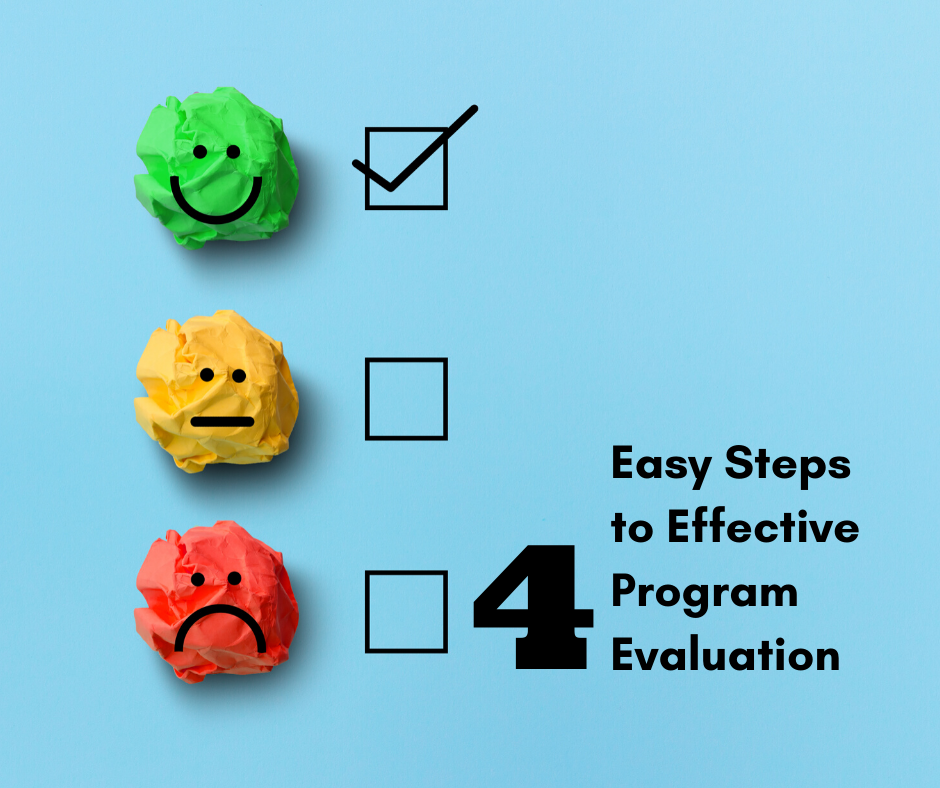4 Easy Steps to Effective Program Evaluation
Evaluation is a vital component of every program or event. Groups that neglect to incorporate evaluative practices into their program cycles run the risk of stagnation or ineffective results. Conversely, evaluation efforts strengthen programs and increase organizational impacts.
There are several reasons that organizations forego the process of evaluation. Maybe they believe the program is as successful as it can be, or perhaps they feel too busy to think about the past and are too focused on putting out the future fires. While there are many reasons to avoid evaluating programs, evaluation is still a helpful tool.
For example, imagine you run a community center. Each fall, you conduct a back-to-school giveaway for children in the community. Volunteers enjoy this program; they donate supplies and backpacks, and you can distribute 100 backpacks filled with supplies each year. If you do not routinely evaluate programs, you can expect to be able to give out roughly 100 bags each year going forward.
However, this year, you decide to evaluate your program despite its annual success. In the process, you discover that a long-term volunteer has a connection with a supplier for bulk backpacks. Next year you request that instead of volunteers buying the packs themselves that they donate that money so that you can purchase the bags in bulk. Due to this change, you can distribute 150 backpacks.
Luckily there is an easy practice for evaluation that takes some of the guesswork out of the process. I am referring to a S.W.O.T analysis. S.W.O.T stands for Strengths, Weaknesses, Opportunities, and Threats.
Strengths: First, make a list of all the advantages of your program. Ask the staff, volunteers, board members, and key stakeholders to give their input so that you have a full and accurate picture.
Weaknesses: Next, analyze areas of the program that could have been better. This information helps create plans for growth, so be as honest as possible.
Opportunities: The third step is to collect new ideas that arose. Is there a new stakeholder you are aware of or a potential collaboration? Make sure to note that information so that you can look into it as you move forward.
Threats: Lastly, think critically about the areas of your program that need to be eliminated or circumstances that may affect this program negatively in the future.
After you collect the information, use it to create goals. The S.W.O.T analysis helps you determine what you are doing well, what you need to adjust, exciting new changes, and situations that may harm the program. Conducting a S.W.O.T analysis does not take much time and can significantly improve your program’s health and function.
If you want more information on the best and most effective evaluation practices, contact Spark Group today to set up an initial consultation.
⭐ Join our weekly newsletter where we share tons of exclusive tips, tools, grant opportunities, and resources to our subscribers. Subscribe on the Spark Group home page.





